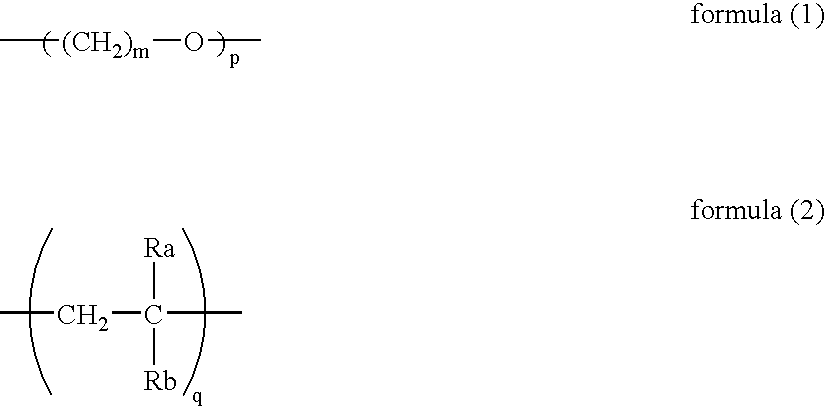Copolymer and photothermographic material containing the same
- Summary
- Abstract
- Description
- Claims
- Application Information
AI Technical Summary
Benefits of technology
Problems solved by technology
Method used
Image
Examples
synthesis example 1
Synthesis of Copolymer 1
[0195] Under a nitrogen environment, 20 g of polymerization initiator VPE-0201 (produced by Wako Junyaku Co.), 60 g of N-isopropylacrylamide (NIPAM) and 20 of stearylacylamide were dissolved in 233 g of ethanol and stirred at 80° C. with gradually heating. After the reaction solution was condensed under reduced pressure, 300 g of water was dropwise added thereto and the formed precipitates were filtered off and dried under reduced pressure to obtain 80 of the objective material. The weight average molecular weight (Mw) was proved to be 135,000 through GPC measurement.
synthesis examples 2-10
Synthesis of Copolymers 2-10
[0196] Similarly to the foregoing copolymer 1, copolymers 2-10 were synthesized by using initiators and monomers shown in Table 1.
synthesis example 11
Synthesis of Copolymer 11
(1) Preparation of Polyethylene Glycol Polymeric Initiator:
[0197] 20 g of polyethylene glycol (PEG, MW=1000, produced by Polysciences Inc.) was dissolved in 100 ml of anhydrous toluene to obtain a PEG solution. To this PEG solution were added 0.054 g of 4-(dimethylamino)pyridine and 4.45 g of triethylamine. Further thereto, 10.12 g of 2-bromoisobutyryl bromide was dropwise added. After stirring for one night at room temperature, the reaction mixture was condensed under reduced pressure to remove toluene and residual brown liquid was dissolved in 200 ml of dichloromethane. This solution was placed onto a separating funnel and washed successively using 100 ml of a saturated sodium hydrogencarbonate solution, 100 ml of 1M hydrochloric acid and 100 ml of a saturated sodium chloride aqueous solution. Then, the dichloromethane layer was dried by magnesium sulfate, filtered and solvents wee removed under reduced pressure. After dried overnight under vacuum, the ...
PUM
| Property | Measurement | Unit |
|---|---|---|
| Percent by mole | aaaaa | aaaaa |
| Percent by mole | aaaaa | aaaaa |
| Volume | aaaaa | aaaaa |
Abstract
Description
Claims
Application Information
 Login to View More
Login to View More - R&D
- Intellectual Property
- Life Sciences
- Materials
- Tech Scout
- Unparalleled Data Quality
- Higher Quality Content
- 60% Fewer Hallucinations
Browse by: Latest US Patents, China's latest patents, Technical Efficacy Thesaurus, Application Domain, Technology Topic, Popular Technical Reports.
© 2025 PatSnap. All rights reserved.Legal|Privacy policy|Modern Slavery Act Transparency Statement|Sitemap|About US| Contact US: help@patsnap.com



